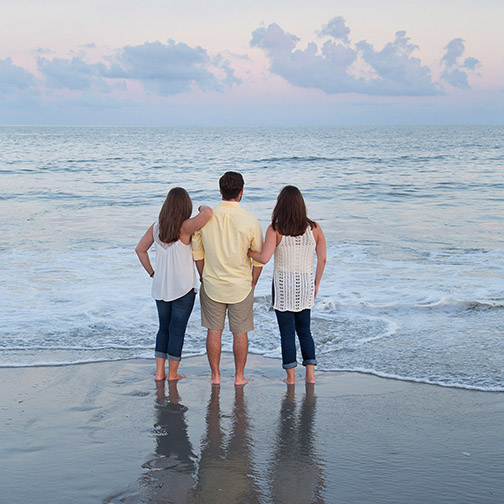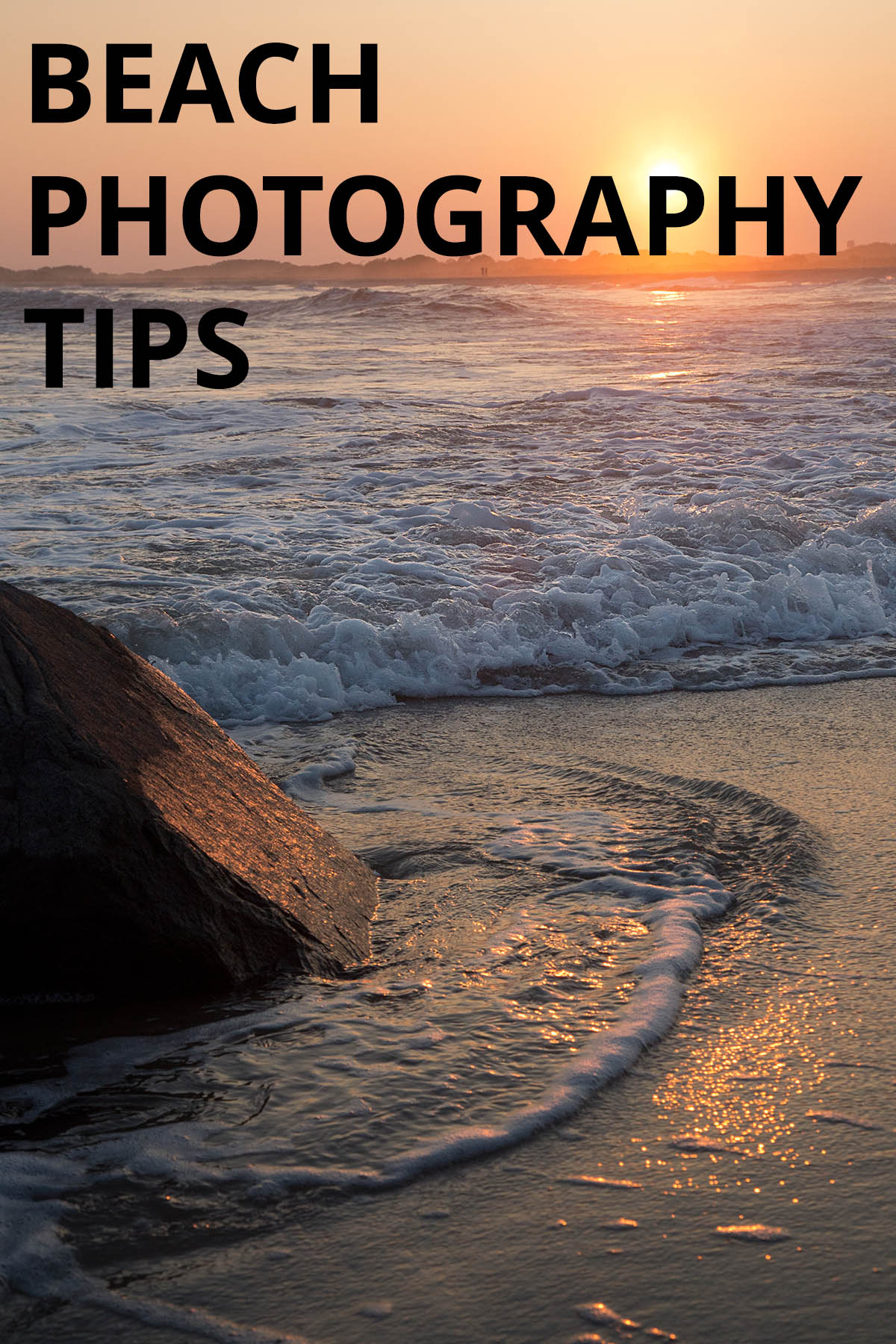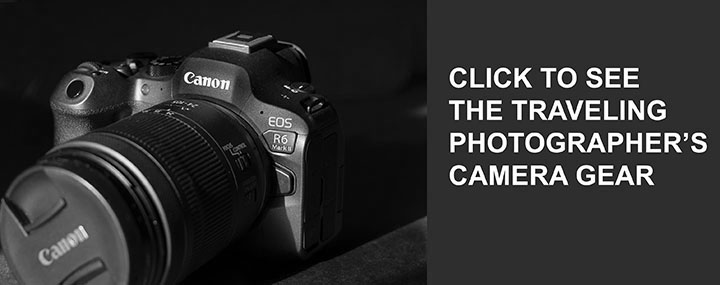How To Shoot Beach Photography
WRITTEN BY: BRUCE LOVELACE
PUBLISHED: March, 2025
Grabbing my camera, along with a few other pieces of gear and heading to the beach has always been an enjoyable activity. I've had a blast shooting both professional beach portraits and beach landscapes over the last 4 decades. Now that I'm retired from shooting portraits for clients, I can shoot photos just for the fun of it.
This post will give you helpful information on the 5 types of beach photography and how to shoot them . I'm going to give you advice on camera settings, exposure, lighting, composition techniques as well as equipment advice. Also you'll get to see a small collection of some of my favorite beach photos.
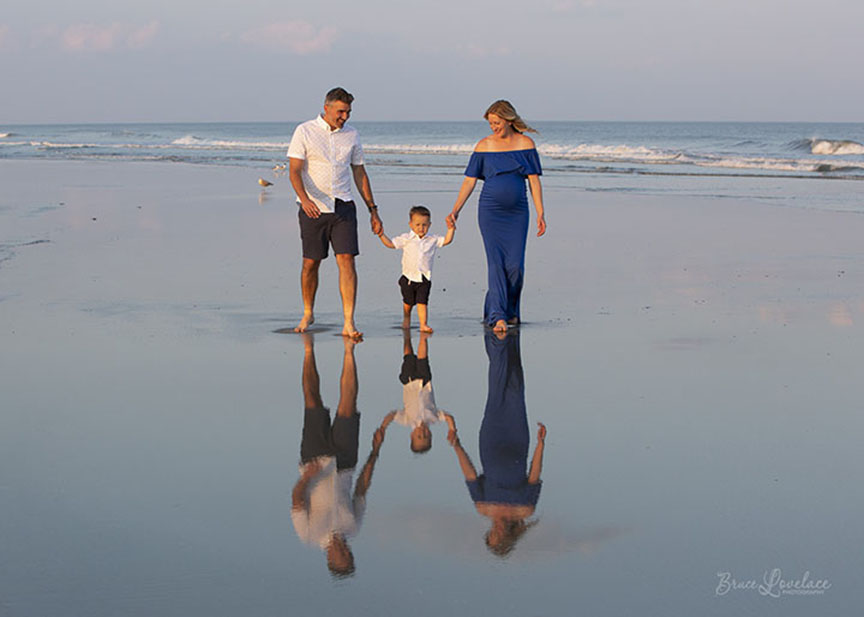 "Reflection At Sunset"
"Reflection At Sunset"Exposure was 1/1000 second at f/5.6 with an ISO of 640
Canon 5D Mark III with a 70-200mm lens zoomed out to 70mm
Lighting and exposure, perspective and composition, and lens selection and camera settings all come into play when it comes to beach photography.
Let's first take a look at the gear I use and recommend and that will help you choose what's best for you and your beach photos.
Best Equipment For beach Photography
Today's cell phones do a remarkable job taking photos nowadays, but if you want the ultimate versatility and image quality you may want to use a regular camera and a zoom lens. With the exception of photos taken before sunrise and after sunset, you'll have plenty of light available and you won't need a flash.
CAMERA. Any camera with a decent sensor and adjustable camera setting will work for beach photography. Cell phone cameras can be used in a pinch with good results, but don't have the power of various camera settings, don't have interchangeable lenses, and don't perform as well under dimply lit situations. I shot the beach photos in this post using either a Canon 5D Mark III or a Canon R6 Mark II.
LENSES. A wide-angle to telephoto zoom lens is best. You can shoot side-angle scenic views and group shots as well as shoot detail shots using the telephoto focal lengths. Longer focal lengths provide you with a more pleasing perspective for shooting small group and individual portraits. Extra long lenses are needed for shooting birds and other wildlife. I usually shoot with a 24-105mm, 100-400mm, or sometimes a 17-35mm lens.
FILTER. Polarizing filters can enhance colors, and darken a blue sky and are particularly good for shooting landscape photos. A regular UV filter will protect your lens from scratches and smudges. In addition to a circular polarizing or UV lens filter, I sometimes use a neutral density (ND) filter for extra long exposure photography.
TRIPOD. I almost always shoot beach photography with a tripod for several reasons. When shooting posed portraits it's a big help to be able to watch everyone in real time as you snap each photo. A steady tripod keeps your camera securely in the exact same place and diminishes the likelihood of getting blurry photos from camera movement.
You don't need the steadying aspect of a tripod when you're shooting in bright light because you'll have faster shutter speeds. For night time, astrophotography, and other long exposure photography a tripod is a must have accessory.
1. Seascape And Landscape Beach Photography
The rock beach photo below was taken during the "Golden Hour" when the light is so sweet. The sand beach photo after that was taken in the middle of the day. When you shoot really matters. Make it a point to pay attention to the light as it changes throughout the day and take advantage of the different ways your potential subject is rendered.
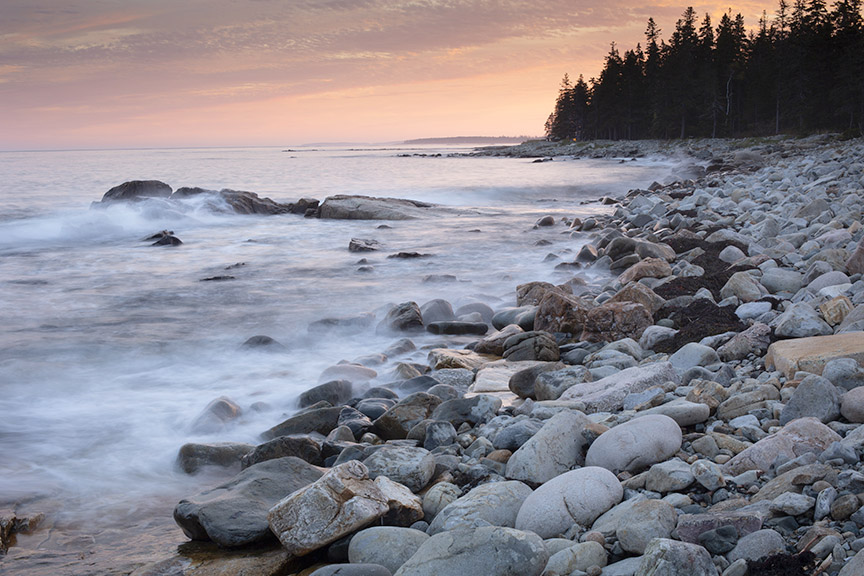 Rock Beach Sunset At Seawall, Acadia National Park.
Rock Beach Sunset At Seawall, Acadia National Park.Exposure was 1/3 seconds at f/22, Canon 5D Mark III using a tripod.
It was basically dark when I took the photo above. The rocks out in the water appear as if they're surrounded by fog, but it's just the effect you get with long exposures of moving water. Using a tripod was a must to keep the camera perfectly steady during the long exposure.
To get the photo below I had to sneak off the trail and maneuver down a sloped rock face to find a location that gave me a good composition. The beach was nearly empty because of the cold windy day. I framed in this scene so that the five main areas of the photos (rocks-ocean-beach-trees-sky) had fairly equal space.
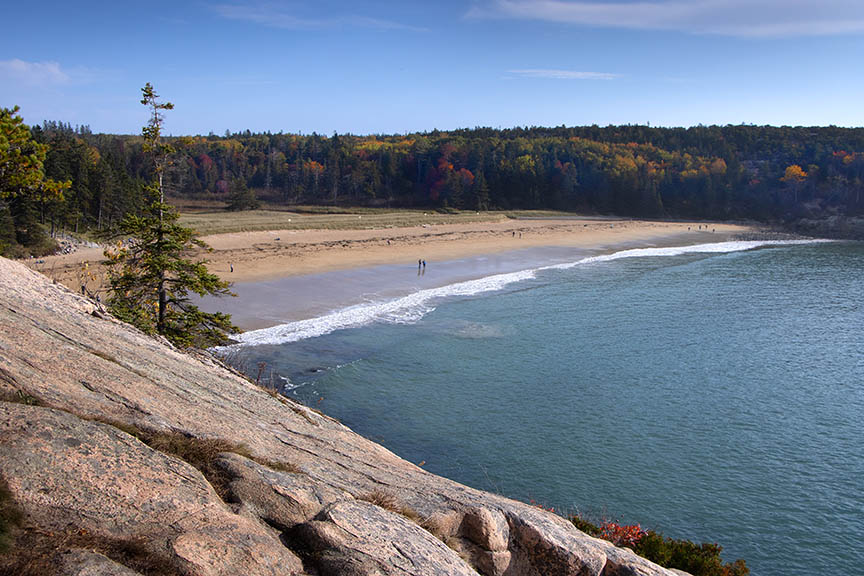
THOUGHTS ON THE COMPOSITION: I chose a spot that would give me strong diagonal lines within the composition. Both the slant of the amazing rocks in the foreground and the diagonal of the breaking waves add visual interest. I included the evergreen tree, placed at about the 1/3 spot, because I liked its position, boldly growing from the rocks.
The Golden Hour
The time of day is one of the most important aspects you need to be aware of with beach photography. Light can be your friend or your enemy, depending on your subject and how the ight renders it. Landscape and portrait photographers often prefer the photos they take to be the unique light that occurs for the hour s that surround sunrise and sunset, know as the golden hours.
Exposure
Although you can always look at your camera's LCD screen to check it, the best way to evaluate your photo's exposure is to take a quick glance at a histogram of your photo on your camera. Beach scenes are often dominated with lighter tones and auto-exposure meters in your camera can be fooled, resulting in under-expose photos.
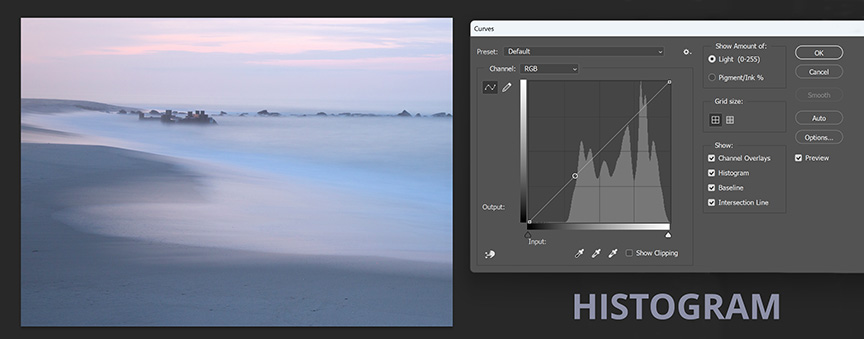 With the sun below the horizon the light is fairly low contrast with no deep shadows or bright highlights. The tones are predominantly light and required about 1 stop (2x) of added exposure compensation.
With the sun below the horizon the light is fairly low contrast with no deep shadows or bright highlights. The tones are predominantly light and required about 1 stop (2x) of added exposure compensation.If you want a quick explanation of a histogram see the post on my sister website Better-Digital-Photo-Tips.com. The post will open in a new tab: What is a Histogram?
2. Beach Portraits
When photographing family portraits, I usually try a few unique ways to shoot. That includes photos with the ocean as the background and photos with the sand dunes as the background.
A good part of the appeal of the photograph above is that it tells a story. In addition to the perfect timing with sweet lighting and picturesque clouds, proper posing is a big part of photographing family portraits on the beach.
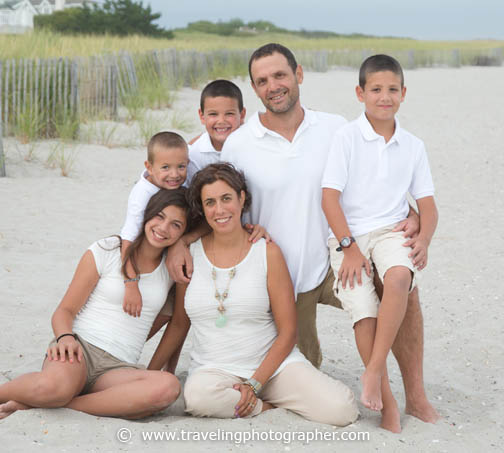 Beach portrait taken in Ocean City New Jersey.
Beach portrait taken in Ocean City New Jersey.Overlap the positions of the members of the family
Look for angles that give you an interesting background that adds to the mood of the portrait, but not to the extent that the background becomes a distraction.
3. Wildlife
In terms of wildlife photography, the most common subject to photograph on the beach are birds and there are many different species. Additionally, with some patience you may be able to photograph dolphins, crabs, turtles, and more.
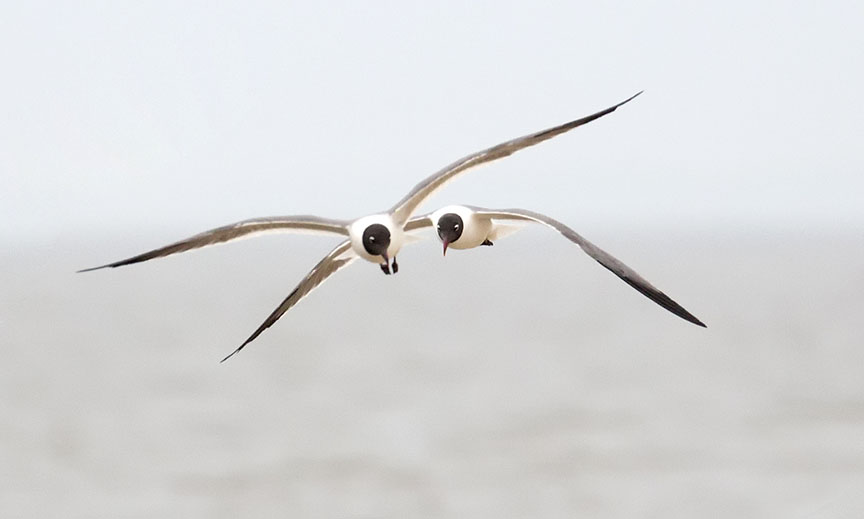
I shot this pair of seagulls along the beach in North Cape May with my telephoto lens zoomed to 400mm. Shutter speed was a super fast 1/2000 second to freeze the motion.
I took quite a few photos of the seagulls flying directly into a stiff wind in order to get the shot I was looking for above. The photo of the two seagulls above was one of my favorite from the day I visited this location.
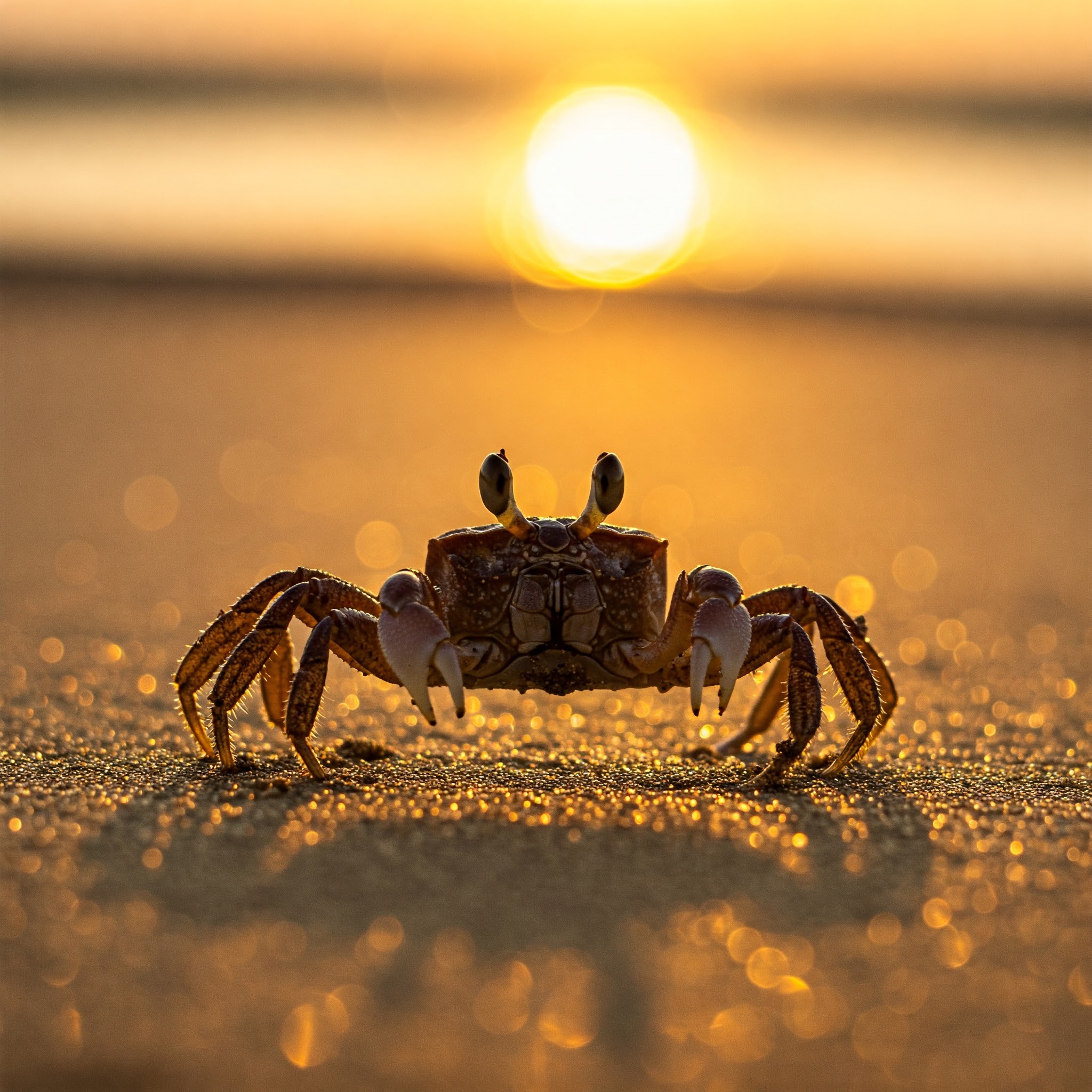
A telephoto lens will give you the power you need to capture an image of a subject that is usually challenging to get close to. The backlighting creates some nice contrast with the light from the reflecting sand.
4. Action Photography
Whether it's your 3 year old running down to the water, a high energy beach volleyball match, or a surfer riding in the waves, action photography requires a fast shutter speed. Fortunately, during the day there is plenty of light on the beach for enabling you to use a high shutter speed to freeze the action.
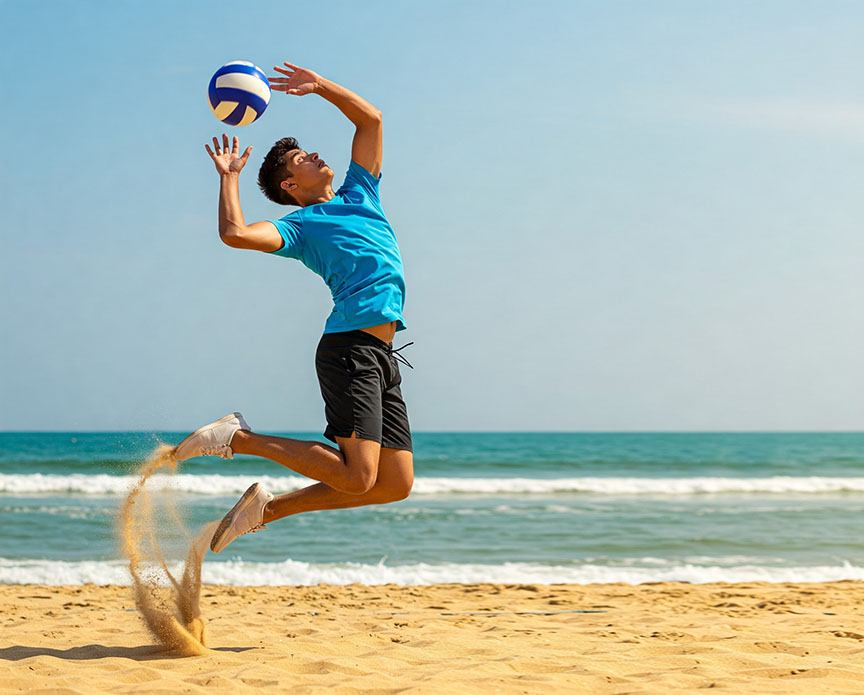
Composed with a perfectly flat horizon. Positioning the camera in a low position lowers the horizon in the frame AND creates a stronger perspective. To capture action photos like this one, you need to have a camera that focuses fast and has a fast burst rate.
To get the shot at the exact moment you want a camera with a fast burst rate (10 frames per second or faster) gives you the best chance of getting an epic action photo.
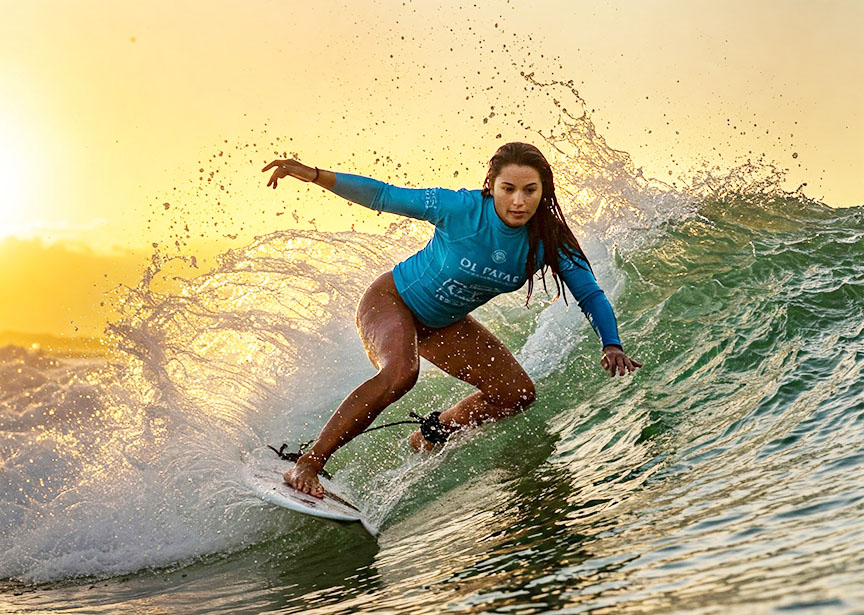 Ocean Surfer With Back Lighting
Ocean Surfer With Back Lighting5. Abstract Beach Photos
The beach is an outstanding location for shooting abstract photos. It could be a close-up of a storm fence, patterns or footprints in the sand, birds in motion, or a long exposure photo of the waves.
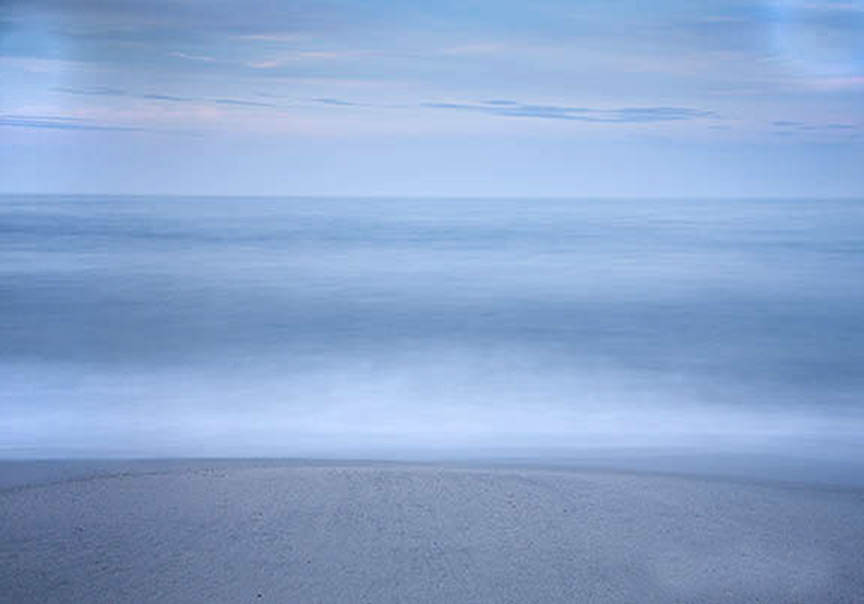
This abstract was created by photographing the waves with my camera mounted on a tripod using a 30-second exposure time. It's a classic use of the "Rule of Thirds" which is often used in composing photographs, especially with landscape and seascape photography.
In the photo above I set my camera to manual and tried a few different shutter speed/aperture combinations until I found the combination I like. The exposure was long enough to completely smooth out the waves into ;lovely pastel colors.
In the photo below I chose an angle where the water runoff that carved patterns into the sand came in on a diagonal. The backlighting created the right shadows.
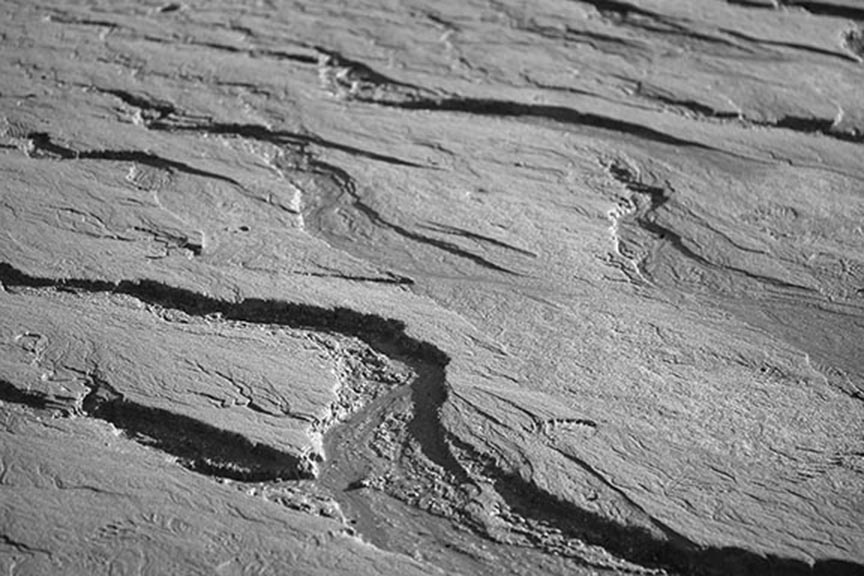
Having a zoom lens mounted to your camera enables you to quickly experiment with different perspectives and different compositions when shooting abstracts photography.
My Favorite Beach Landscape Photograph
I made one of my all-time favorite photographs shooting directly into a fast-moving storm as it roared across the Delaware Bay toward Sunset Beach in Cape may New Jersey. It was a 30 second exposure of the approaching summer storm with the beach in the foreground that transformed into an epic abstract for me.
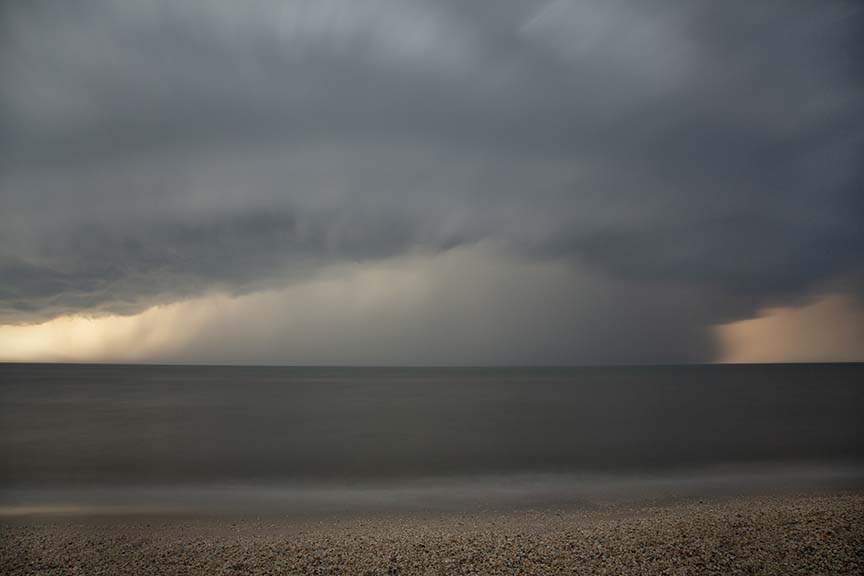
Position your mouse cursor on and off the storm photo.
For me, it was a surreal moment. Most of the people were there to see the sunken remains of the concrete ship, the S.S. Atlantus, or to get a look inside the Sunset Beach Gift Shop. They were oblivious to the massive, intense storm barreling down on us. I only had, but maybe 10 minutes before the high winds and driving rain reached us and the photo op would be gone.
I experimented with a variety of shutter speeds, but was the happiest with this 30-second exposure because of the abstract look of the waves contrasted with the sharp pebbly beach. Which version do you like best, color or black and white?
Conclusion: What Is Beach Photography
Beach photography has different meanings for different people. Beach photography encompasses any photographic work done in a beach environment. This broad category can include a wide range of subjects and styles, including
Beach portraits, both casual, candid, and posed, are the most popular because of the great background. Shooting landscapes is my favorite because of the natural beauty that naturally arises with the combination of the ocean, the sand, and the sky.
Subjects for wildlife photography is limited on public beaches, but visiting more remote beaches gives you a diverse range of water birds and other creatures to photograph. Action photography opportunities include surfing, swimming, and beach sports .
As a camera geek from way back when I've been fascinated with shooting abstract photography and the beach provides many opportunities for capturing patterns, textures Focusing on the textures, patterns, ripples, and reflections found on the beach.
It's my hope that you got at least one idea for successful beach photography and that I've inspired you to go shoot your own!

Bruce Lovelace is the publisher of TravelingPhotographer.com. Bruce shot portraits full time for over 35 years. Now he shoots more travel photography. Read more about him on the About Page. He also publishes how to articles and camera gear reviews at the Photography Tips and Canon Geek websites.
The Traveling Photographer Location on Google My Business
